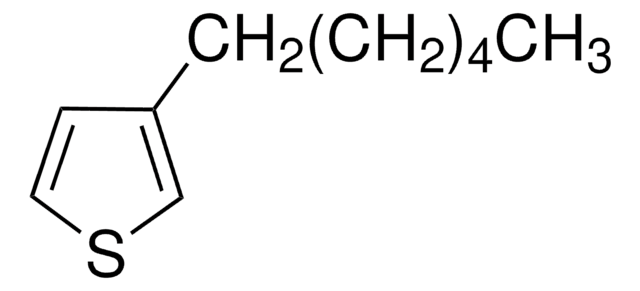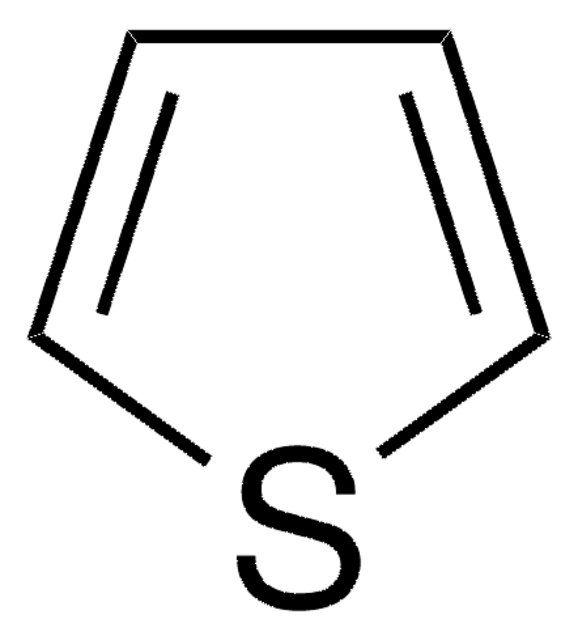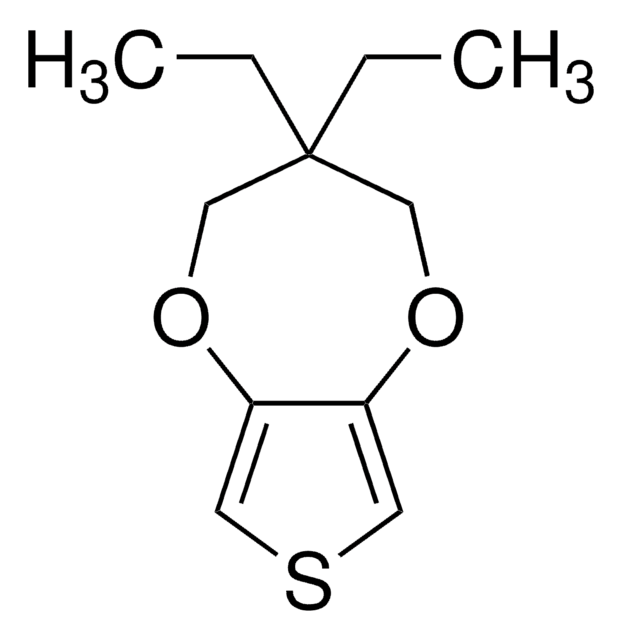751871
3,4-Dihexylthiophene
97%
Synonym(s):
3,4-Bis-n-hexyl thiophene
About This Item
Recommended Products
Quality Level
Assay
97%
form
liquid
refractive index
n20/D 1.494
density
0.925 g/mL at 25 °C
SMILES string
CCCCCCc1cscc1CCCCCC
InChI
1S/C16H28S/c1-3-5-7-9-11-15-13-17-14-16(15)12-10-8-6-4-2/h13-14H,3-12H2,1-2H3
InChI key
YIRIIAIZQBBXHL-UHFFFAOYSA-N
Related Categories
Application
Storage Class Code
10 - Combustible liquids
WGK
WGK 3
Flash Point(F)
Not applicable
Flash Point(C)
Not applicable
Choose from one of the most recent versions:
Certificates of Analysis (COA)
Don't see the Right Version?
If you require a particular version, you can look up a specific certificate by the Lot or Batch number.
Already Own This Product?
Find documentation for the products that you have recently purchased in the Document Library.
Articles
The soaring global demand for energy, coupled with the limited supply of fossil fuels, has increased the need for renewable, low-cost energy sources. Organic electronics have shown great promise for applications in lighting, power, and circuitry, with rapidly improving performance already surpassing that of amorphous silicon-based counterparts.
Our team of scientists has experience in all areas of research including Life Science, Material Science, Chemical Synthesis, Chromatography, Analytical and many others.
Contact Technical Service

![Thieno[3,2-b]thiophene 95%](/deepweb/assets/sigmaaldrich/product/structures/353/609/429fd4bf-e217-4371-80a3-9e5a4d88908b/640/429fd4bf-e217-4371-80a3-9e5a4d88908b.png)






